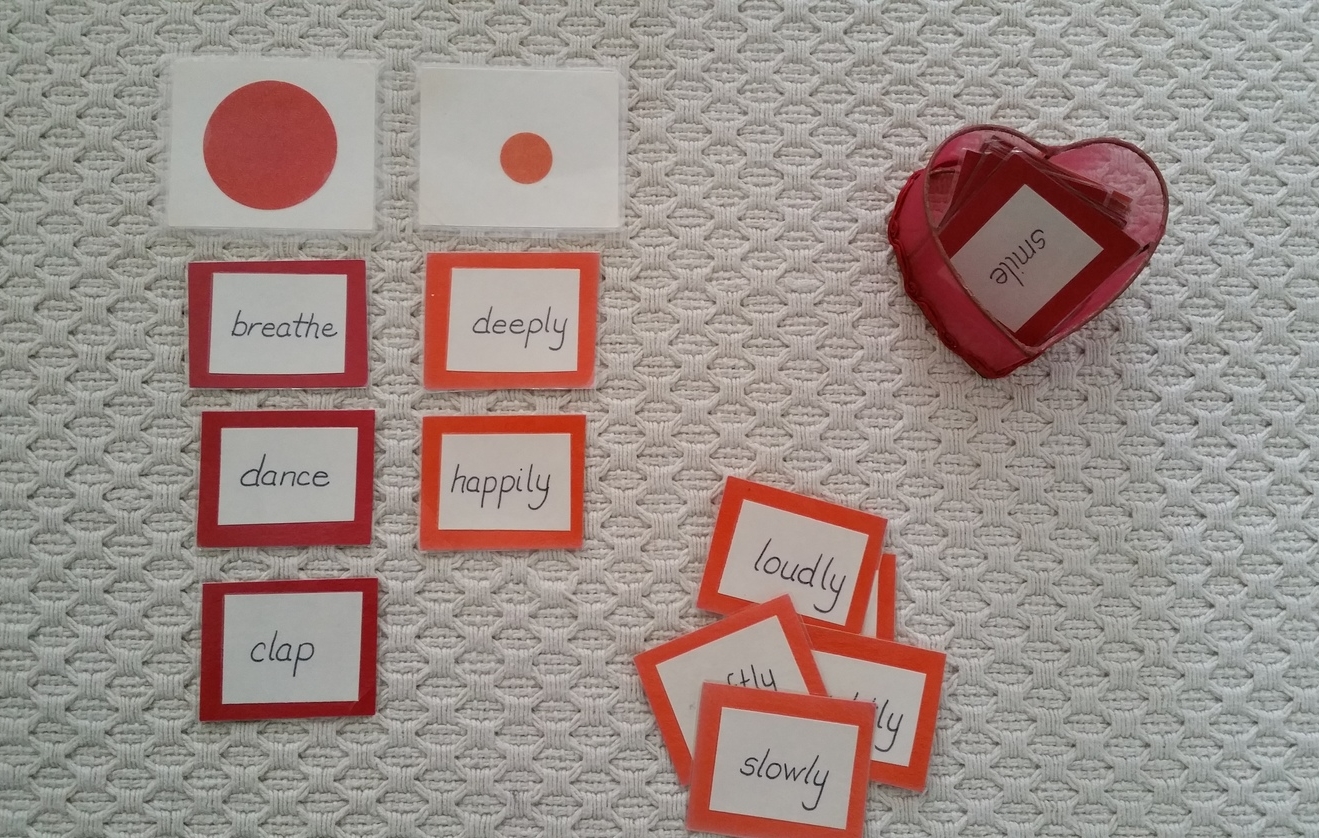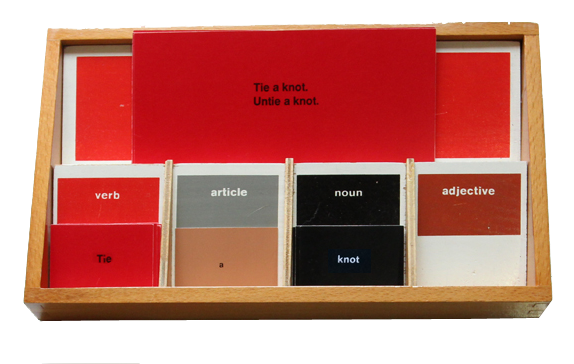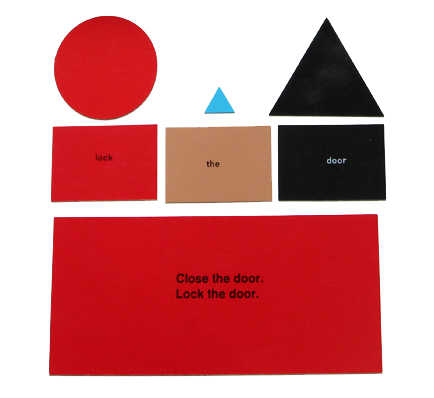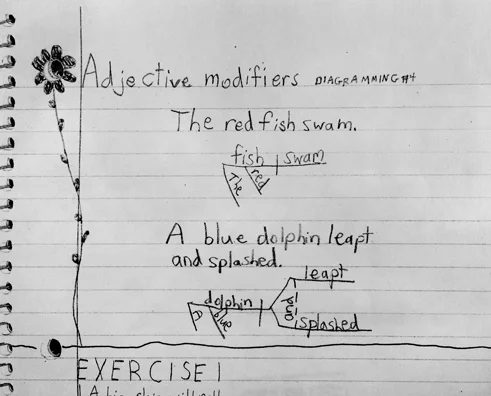Our montessori
There’s a lot of information on the Montessori Method. See our resource list, it offers a starting point for navigating all the literature available. What follows is discussion about how we carry out the Montessori approach at our school. (8 min read, but well worth it!)
WE practice LOVE AND SINCERE REGARD FOR THE CHILD
Some parents of children at our school think we are using pure magic. We believe that love and sincere regard for the child are magical and do work wonders. Mindful intention guides our staff. We also hold firmly to fundamental principles of the Montessori approach:
The child is at the center: Classrooms and hands-on materials are designed to cultivate children’s innate desire to learn.
Three hour work cycle: This allows time to build up to the "ah-ha" moment.
Three year class cycle: Older students practice leadership, younger ones are motivated by older friends' knowledge and abilities.
Unspoken curriculum: Navigating social-emotional worlds gives children opportunities to strengthen effective communication skills.
Freedom with responsibility: Children are the fulcrum, balancing these two concepts.
Let’s dive in, shall we?
Classrooms foster natural curiosity
If there was a banner hanging above every classroom doorway it would read: "Take learning, make it yours, we trust you". All children are naturally curious. All have an innate desire to learn - all of them. The classroom is designed to foster that inherent wonder.
Materials are organized on shelves around the room. Children can choose to sit at moveable tables (chalkies) or on the floor. They can choose whether to work in groups, pairs, or individually. The environment supports every type of learner. There are corners for quiet, concentrated work. There are communal tables for group work. It’s a place where a child can move freely around and discuss their work with others.
Think of those hip tech companies, like Google, with offices set up in big open spaces with few walls and plenty of ping pong tables. The company wants their people to think creatively, collaborate with others, be innovative. Our classrooms are similar, minus the pingpong tables.
Google founders, Sergey Brin and Larry Page, are on to something. Guess what? They both went through Montessori programs!
The "Ah-ha" Moment: the progression of hands-on materials
The beauty of Montessori materials is that they lead children to having their own “ah-ha” moment -- when they are able to make the connection between the concrete material and the abstract concept, then make further connections between concepts. This progression of language materials is illustrated in the slideshow here. ---->
See Claud’s talk about the progression of math materials.
For younger children, materials are designed to engage the senses. Like many preschool programs, children are learning the basics of size, shape, and color. Here, the real focus is on the hand. These materials allow children to satisfy the urge to use their hands to discover the world. This is not old fashioned. Current studies in neuroscience support the connection between hand development and brain activity, especially in young children. The focus on tactile activities is also for writing preparation. It takes finger strength and dexterity to hold a pencil.
As children get older, materials move from the basics of size, color, smell, and shape to expanding lessons in math, language, science and geography. Let’s take the puzzle maps. At the primary level children begin by putting puzzles together. Later they will trace the pieces to create their own map of Africa or Australia. In lower elementary they often use maps as inspiration for research, learning each country’s capital or drawing the flag. By the upper elementary they are understanding how the world fits together. Throughout they are delving into cultural projects, looking at board games played in India or following the cultural roots of pizza to Italy. World culture and history are blended into most lessons. Learning becomes about connecting the dots between information and forming a nuanced understanding of the world.
to the future
This approach to education urges children to discover the joys of learning on their own. Lessons are geared towards piquing children’s curiosity and imagination. They take ownership of their learning. Down the road - in middle school, high school, college, and especially in the work world this pays off. Former Montessori students tend to be creative, proactive, independent, critical thinkers. See what some of our alumni have to say.
the three hour work cycle
Having time is key. Part of the Montessori approach is protecting time for children to work through learning in their own way. Think back to the hip tech company- people are using a focused creativity to solve problems, no one is leading them along every step of the way. We give children the time and space to work similarly. Though they aren’t sequencing matrixes for software, they are going to the depths of their intellect and figuring out how to master concepts on their own. One of our students loved geography so much that he learned the name and location of every country in the world. He was in first grade.
It seems like a simple enough concept but when you consider how our lives flow in this day and age - having three hours of undisturbed, concentrated time is almost unheard of, even in school. It is important to keep the work cycle intact. We take that seriously here because it’s the gateway to meaningful learning.
FREEDOM WITH RESPONSIBILITY STARTS early
Imagine these two concepts on the opposite ends of a lever. Students are the fulcrum—shifting this way and that to find the right balance.
All day, children are making choices about what they want to do, where they want to sit, who they want to work with. Teachers guide children to choices that foster these principles. The children's responsibility is to complete lessons, take care of the classroom, and respect one other. Their freedom is deciding how they want to do those things.
From the age of three our students are making choices and learning about both positive and negative results. This practice proves useful at age 15 or 24 or 31, when decisions can have greater consequences. Mindy, an elementary teacher has said, “This is a great place for children to figure out who they are.” A big part of that is being able to make mistakes and having the guidance to learn from them. A Montessori education provides these decision making opportunities. Every day. All day.
Three year cycle: Practicing leadership at age 4
Children from a three-year age range come together and work with the same teacher for three years. Let’s look at this through a framework of exploration:
-First year students are early explorers of the new environment (the new classroom).
-Second year students are returning home, familiar with their surroundings, and have internalized the ground rules.
-Third year students are the leaders of the room and are approaching mastery of concepts.
As described on the primary page, older children are mentors. Younger ones are inspired by their older friend’s knowledge and think, "I want to be able to do that!" This supports the drive within, the sense of completing a task or learning a lesson because they want to, not because someone is telling them to.
Three years with the same teacher means a deep trust develops. It also means that parents and teachers have time to become a team and meet each child’s needs with support rooted in respect and love.
We don’t have tests, we do have on-going assessments
Montessori teachers are highly trained in the art of observation. In this observation, assessment goes on daily, not at the end of a unit or semester. The only standardized test offered is the IOWA exam at the middle school level.
Can children understand the joy of learning and take that seriously enough to keep on par with their peers in more traditional settings? We think so and the mean scores on our IOWA tests support that theory. We hear from parents that students transition ahead of their counterparts, both academically and socially. See the Elementary page for discussion about the transition.
The Unspoken Curriculum – conflict resolution, grace and courtesy, respect
The students are learning math, geography, science, and language. They’re also learning to navigate emotional and social worlds. This curriculum can’t be measured on tests or garnered from memorizing facts in a book. It is the curriculum of cultivating a sense of self, stewardship to care for others, and regard for the wider world. We believe this is important.
Disagreements and hurt feelings, which are inevitable, are met with opportunities for learning. Children have discussions and learn techniques for conflict resolution. Whether it’s a dispute about cutting in line or a religious belief, both are taken seriously. Children learn how to listen to alternate viewpoints. They work together to resolve disputes. When needed, adults oversee this process but children are encouraged to develop their communication skills and are soon capable of independent problem solving.
Can you combine Montessori with traditional curriculum standards?
What about an approach that borrows aspects of the Montessori method but relies on textbooks for lessons and uses tests to measure performance? Well, the answer depends on who you’re talking to and what they believe about education. There’s really no right answer but here are some thoughts.
One of the goals of the Montessori approach is Mastery -- having the ability to understand a concept or solve a problem from multiple angles. The three-year class cycle, material based learning, and an undisturbed work cycle are all geared toward developing mastery. Take one of those tenets away and the foundation of the Montessori approach is altered.
A genuine Montessori approach focuses on what is best for the child and is not driven by a curriculum designed to earn the best scores on a test. When teachers are confined to standardized requirements the paradigm shifts from fostering a love of learning to teaching every student the exact same set of pre-identified facts. How do you encourage true independence when the line is already drawn in the sand?
Many of us had a traditional education; it's not the worst thing in the world - neither is a Montessori hybrid program. The point is, if you are seeking something more for your child, consider the following questions: Is the curriculum based on working with the materials? Is there a three-year, multi-age classroom? Is there a three-hour, intact work cycle? How are the teachers trained? What standards are teachers and students being required to meet, by whom, and what happens when they fall short?
"One test of the correctness of educational procedure is the happiness of the child."
- Maria Montessori











